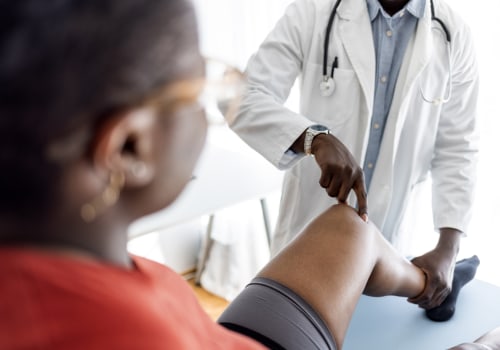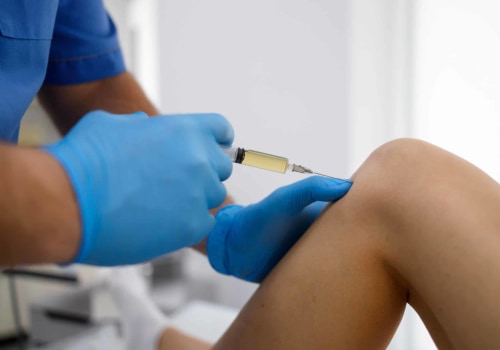Rest, ice, compression and elevation (RICE) are good for knee pain caused by a minor injury or arthritis flare-up. Use RICE. Allow your knee to rest a bit, apply ice to reduce swelling, put on a compressive bandage, and keep your knee elevated. We all love that hard-earned muscle pain after an intense workout, and that pain is fine.
This post-exercise pain usually resolves within 24 to 36 hours, but it can be treated as joint pain if it persists for a few days. Walking is an excellent exercise, not only for the knee, but also for the cardiovascular system. Many cardiologists suggest that a brisk 30-minute walk three times a week is more beneficial to the heart than high-intensity gymnastics exercises. It's worth remembering that if you have one overweight stone, you're putting the equivalent of 10 stones of excess weight on your knee joint when you climb or descend stairs or do squats and lunges.
If you're overweight, take steps through diet and exercise to start losing weight. Omega-3 supplements can also be beneficial for joints, as can turmeric, a powerful natural anti-inflammatory that helps reduce joint pain associated with inflammation, as in the case of rheumatoid arthritis. When sitting or driving, keep your leg at a 45° angle instead of flexing it at 90° (as you can automatically do with your left leg when driving an automatic car). In addition, adjust the seat so that the right leg is at a more relaxed angle, instead of being very flexed and bent at 90°.
If you feel knee pain when you're sitting, be sure to sit with your knee at 45° instead of 90° or higher, as this reduces static force on the joint. King Edward VII Hospital, 5-10 Beaumont Street, Marylebone, London W1G 6AA. Will physical activity reduce or increase arthritis pain? Get tips on exercise and other common concerns for dealing with symptoms of arthritis and the pain caused by arthritis. There are many types of medications available to ease arthritis pain. Most are relatively safe, but no medication is completely free of side effects.
Talk to your healthcare professional to create a pain management plan for your specific pain symptoms. A pain management plan aims to reduce pain. It also aims to alleviate distress, increase mobility and improve quality of life. The key is to know your limits. Strength training that focuses primarily on strengthening the quadriceps and hamstrings muscles can decrease pain and help people better tolerate arthritis and other structural knee problems.
Staying active helps you control your weight and build muscle, which can help protect your knees from further damage. However, people who are overweight and have arthritic knee pain can lessen the impact and ultimately alleviate knee pain by lose weight. In fact, people with arthritic knees lose about 20 percent of their pain for every 10 pounds of weight loss. There are many things you can do to ease knee pain, whether it's due to a recent injury or arthritis you've had for years.
Follow these 11 tips on what you should and shouldn't do to make your knees feel better. The right combination of strengthening and stretching exercises can alleviate pain by helping to improve the way the joint moves and works. Certain knee conditions, such as a cartilage tear, can cause knee pain if the leg is fully extended. Simple over-the-counter pain relievers, such as common paracetamol, may be helpful for knee pain.
Persistent knee pain should not be ignored, as it may indicate underlying arthritis in the knee or other joint problems. But if taken regularly, this simple but effective and very safe pain reliever can be very beneficial for persistent knee pain. Seek expert advice from a rheumatologist or orthopedic specialist to design an appropriate treatment plan for knee pain based on your specific needs. If you follow these recommendations and shouldn't do it, and keep your commitment to your health, you can effectively control knee pain and maintain an active and full life despite arthritis.
However, it is rare for a patient who can walk to have muscles around the knee so weak that this weakness contributes greatly to knee pain. Take paracetamol with breakfast, lunch, dinner and just before bed to get the most benefit during an exacerbation of knee pain. Inadequate or high-impact exercise can worsen symptoms of knee arthritis and cause increased pain or swelling. While nothing can reverse these physical changes, you can reduce pain by strengthening the muscles around the knee, as well as those in the pelvis and trunk. In addition, stretches that focus on increasing hip flexibility, such as a butterfly-shaped stretch and a standing hip flexor with a resistance band, can help alleviate knee pain.
For people with moderate osteoarthritis (up to stage), regenerative therapies, such as stem cell therapy, platelet-rich plasma (PRP) injections, and prolotherapy, can provide treatment for knee pain and slow the progression of the disease. Patients with arthritis or other types of knee pain often find that if they lie on their side with the inner surface of each knee touching, pain occurs that can disturb sleep. Knee pain is often accompanied by swelling, stiffness and reduced mobility, which are typical symptoms of knee arthritis. It's also advisable to avoid activities that put extra pressure on your knees, such as kneeling, flexing your knees deeply, and running downhill.



